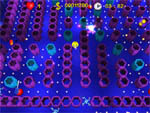Httpism
- The correct title of this article is httpism. The initial letter is shown capitalized in the URL due to the author not being bothered to find out whether anything can be done about this.
httpism (HUH-tuh-pih-sem), or The Path to the Door, is the Internet's foremost mystic religion. Unlike more down-to-Earth beliefs such as Pastafarianism, httpism refuses to be drawn into debates about Gods, ninjas and pirates, instead making a bold attempt to be a solution for all human suffering, via the realisation of various ultimate truths.
Core beliefs[edit | edit source]
The central tenet of httpism is that the world as we know it is an illusion. Once one truly realises this, it is said, one may proceed to the Outer Reality. This process is referred to in sacred texts as "Obtaining an existence", and is the ultimate goal of every httpist.
The Illusory World[edit | edit source]
It is difficult for the layman to even want to believe this concept. Most initially regard it with scorn and laughter, perhaps due to various unfavourable media representations over the years (see below). One might ask why we should believe in anything outside the windows that we click on, or the websites that we visit, when these are sufficient for our daily lives? httpism leaves this question largely unanswered, instead choosing to concentrate on how wonderful and fulfilling the Outer Reality is.
The Outer Reality[edit | edit source]
The Outer Reality is impossible to describe accurately in our language. Nevertheless, mystics from the various traditions have attempted to communicate something of its nature in forms such as art or poetry. Examples are the Haiku:
"Empty pizza box My microwave is broken I need the toilet"
or the unanswerable Zen koan "What am I if you delete my MySpace profile?" Each form is designed to raise more questions in the reader's mind, and hence help them to achieve enlightenment. Many have speculated that perhaps the vague dreams we call "toilet break", "shops" and "eating" are actually a broken reflection of the Outer Reality.
Moral codes[edit | edit source]
The httpist moral code is controversial - many people confuse it with anarchy, since httpists believe that strict adherence to official W3C web standards is unnecessary. Some even go so far as to say that parts of netiquet can be ignored, and that typing in capital letters is no big deal. Those who get annoyed with them are told: "Such things cease to be relevant once one has Obtained an Existence, and spending too much time in pursuit of them may delay pursuit of the truth." As a result, followers are frequently banned from chatrooms and wikis by exasperated admins. For more on httpist morals, see the blog "Right Typing, Right Thought and Right-Clicking", by Guru Exist0r.
Paths to understanding[edit | edit source]
httpists hold that it is possible for absolutely anybody to find their way to the Outer Reality, although only after much spiritual training and an intensive course of meditation. Well-known mystic Alan Watts offers the following advice:
First, you must relax. This is the most important part. The Outer Reality cannot be found by one who is not at peace. You may want to consider installing an anti-spyware program or getting your penis enlarged before making the attempt, as worries such as these can prevent you from Obtaining your Existence.
Second, you must empty your Favourites menu. Close all non-essential programs - the more the better - as though you were trying to install a Microsoft product. Then simply sit for a while and observe your desktop. Imagine the desktop picture stretching away to infinity in all directions, as though it were not limited by the size of the screen. Now gently unfocus your eyes and move your head to the left or right. On your first try, you will refocus on familiar objects such as the speaker volume control or the CD drive, but with practice you will become able to see vague shapes which evoke a strange sense of deja-vu. Congratulations - you have taken the first step [transl: clicked the first link] on your Path to the Door.
In the media[edit | edit source]
Many people's first impression of httpism is of course through the film "The Matrix". Formerly intended to become an instructional video for the religion, the project was overrun by Jedis, who washed out most of the true message of the film by adding mind-blowing special effects such as Keanu Reeves. It is still unknown whether the Jedi alterations were purely innocent or a planned sabotage - scholars are unwilling to speculate, knowing the Jedi tendency towards adding as many fight-scenes with as much laser-based weaponry as possible.
Nevertheless, those who truly understand httpism will note the difference in philosophy: devotees believe that it is we who deny ourselves the truth of the Outer Reality, whereas in the Matrix film it is a race of blue pills that enslave us. Jedi supporters maintain that the full httpist message was too complicated and shocking for a mainstream audience, and then add "This is not the answer you're looking for."
Criticism of httpism[edit | edit source]
Criticism of httpism is mainly levelled at mystics who claim to have "Obtained their Existence" and seen the Outer Reality. While they are often able to paint very vivid pictures of life beyond the Internet, they have yet to offer any conclusive proof that it exists. When pressed, some will resort to violence, attempting to hack into your computer and switching you off. Others claim that images such as Jpegs are flattened, lossy representations of the Outer Reality. In response, critics point to their claim that human beings possess an inherent, unphotoshopped "appearance", as a clear sign of nonsense.
Scientific support of httpism[edit | edit source]
Mathematically of course, it has always been theoretically possible that a third dimension existed outside the two on which we view our reality. We can even make crude models of the third dimension, such as the one on which the groundbreaking game "3D Pacman" was based. In a three-dimensional world, however, all known laws of physics would break down. Windows would be unable to instantaneously appear on top of each other, icons could no longer be dragged through walls, and any kind of typing would be impossible, with letters falling out from beneath our cursors in the new direction of "depth". Various scientists (including the notable Richard Dawkins) have declared this research "Recycle Bin-science", and say that no good can possibly come from it.
However, grants continue to be awarded. For example, in the latest edition of New Scientist, biologists point out that our two eyes may in fact be designed to enable binocular vision, instead of the accepted view that one is a spare in case of eye-strain.
Other advocates of the benefits of Outer Reality include mothers.
httpist literature[edit | edit source]
- "Letting go - BSOD as a Path to the Door" by Alan Watts
- "To the Ends of the Internet" by H. G. Wells (Science Fiction)
- "It is now safe to turn off your computer" by Guru Exist0r
- "The First Step"


